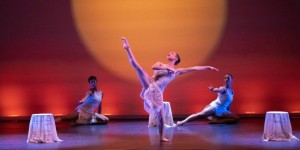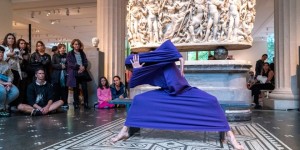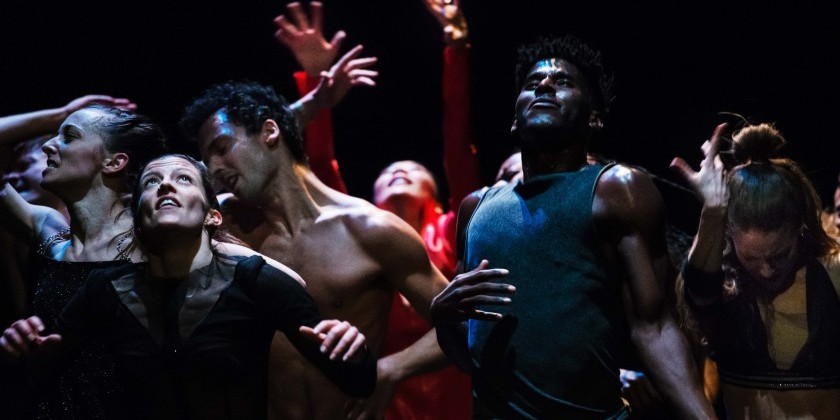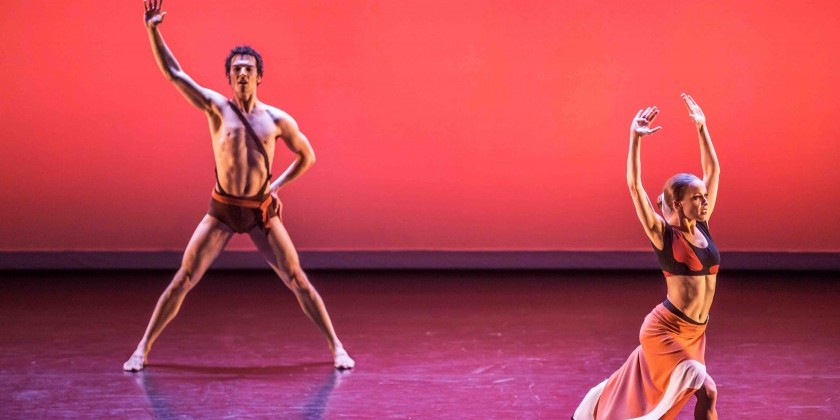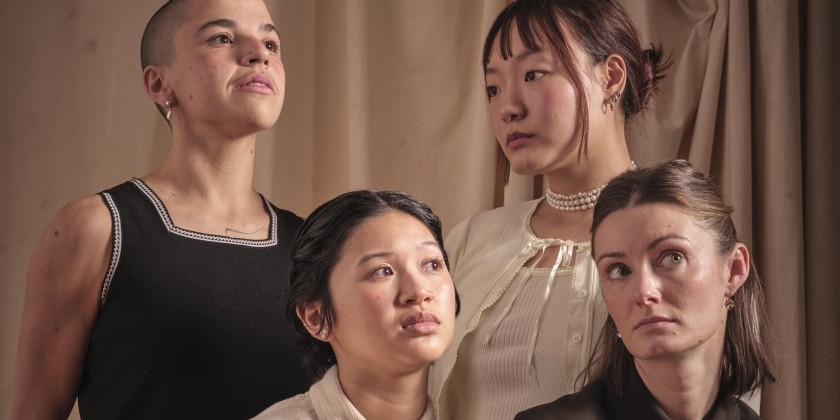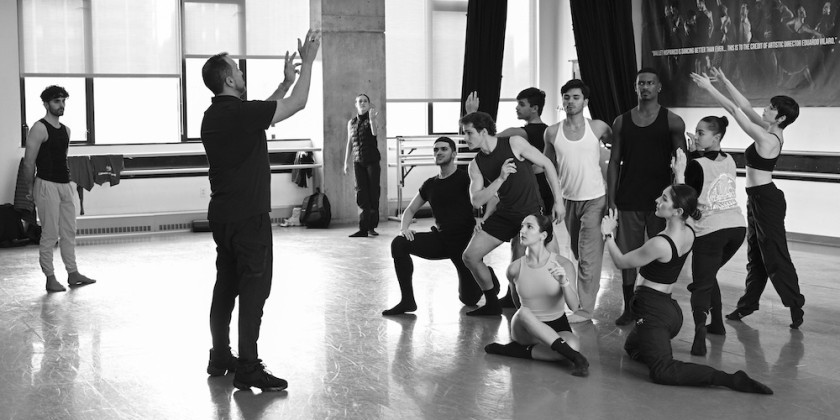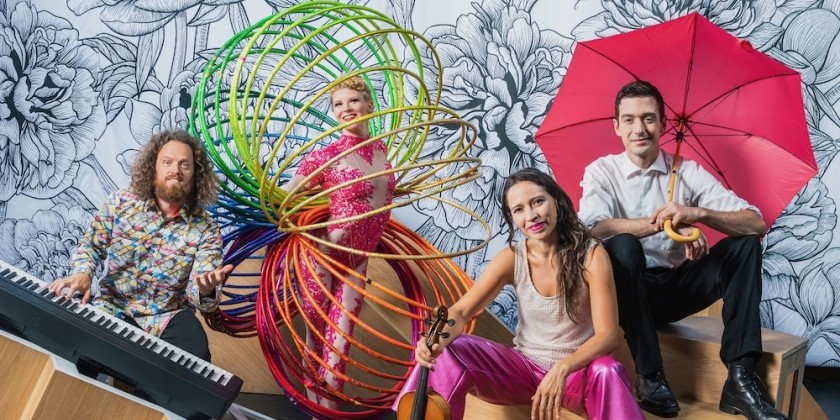DAY IN THE LIFE OF DANCE: The Martha Graham Dance Company Reframes Agnes de Mille's Iconic "Rodeo"

The Company's 100th Anniversary Celebration Begins with a Hoedown
Graham Deconstructed Studio Series: "Rodeo"
Martha Graham Dance Company
September 19, 2023 @ 7 PM
What does it mean for a work of art to be distinctly “American?” This young country’s artistic roots reflect a mixture of historical traditions and experiences— from the art of indigenous cultures, to that of early European settlers; from the expressions of Africans, who were brought to this country as enslaved people, to those of immigrants who came through Ellis Island. Today, American art continues to shift and evolve reflecting the diversity of our population.
The Martha Graham Dance Company — the oldest performing dance company in America — kicked off their 2023-2024 Studio Series last week by offering an inside look at their new take on Agnes de Mille’s Rodeo (1942). This choreography, which predates Graham’s Appalachian Spring by two years, surfaces some of the American themes that Graham herself explored. In giving de Mille’s fabulous work another life, the Graham Company encourages fresh thinking around the question, "What makes a work of dance 'American'?"
Says, Janet Eilber, artistic director, in a program note, “We are interested in reframing iconic works of the 20th Century in ways that expand our views of that time and offer a more inclusive history. We hope our new production of Rodeo, which also features the most diverse cast to have ever performed the work, will resonate with today’s conversations about gender and inclusion while celebrating Agnes’s timeless and timely story about a young person, who feels unable to fit in, finding community on their own terms through dance.”
The restaged Rodeo (pronounced “Ro-DAY-oh)” receives its world premiere this Saturday, September 30th at The Soroya in Northridge, California. The dance then comes to NYC’s City Center in April 2024, where it will be performed alongside a brand-new commission, a collaboration between American choreographer, Jamar Roberts, and Grammy Award-Winning-American Folk composer, Rhiannon Giddens.
These performances mark the launch of an epic three-year-celebration of the Graham Company’s 100-year-anniversary in 2026. Each performance season will focus on a specific Graham era, with the 23-24 season, “American Legacies,” highlighting her social activism, Americana, and modernism. Other projects include a book of archival photos by Deborah Ory and Ken Browar of the NYC Dance Project, and the “Lamentations Variation Project,” where choreographers around the world will create works inspired by Graham’s seminal solo Lamentation (1930).
Laurel Dalley Smith as "The Cowgirl," the central character of Rodeo, presented at Graham Deconstructed. Photo by Melissa Sherwood
Rodeo was originally commissioned by the Ballet Russe de Monte Carlo. Anderson Farrell and Diana Gonzalez, of The De Mille Working Group, are the force behind Graham's current re-staging. They bring key updates to the 81-year-old work, notably an innovative Bluegrass ensemble arrangement of Aaron Copland’s score by composer, arranger, and (former Punch Brothers’ fiddler) Gabe Witcher. Gonzalez, who set the work on the Graham dancers, possesses a deep knowledge of de Mille’s life and history, as revealed in a question and answer session with Eilber, before the showing.
Though de Mille was what we might today call a “nepo baby” — her father being playwright William C. de Mille, and her uncle the legendary filmmaker and director, Cecil B. DeMille — her family connections didn’t offer her any career advantage. Her personal story surprisingly hints at the classic American underdog theme, where one finds unlikely success after seemingly countless failures. De Mille desperately wanted to be a dancer and choreographer, and as a young woman secured opportunities to choreograph for small musicals, but, she was fired from most of her early jobs. Each defeat, however, inspired her to work harder. As de Mille relayed in her 1982 book “Dance to the Piper and Promenade Home”, Graham was her great mentor, and an attempt to encourage this young choreographer was the source of the oft-referenced Graham quote about the duty of an artist:
“There is a vitality, a life force, a quickening, that is translated through you into action, and because there is only one of you in all time, this expression is unique. And if you block it, it will never exist through any other medium and be lost…”
By way of her family’s move to Hollywood when she was a child, de Mille was exposed to the vast Western plains and the excitement of the rodeo. These memories, along with the plays and cinema she was exposed to growing up, were inspirations for the narrative of Rodeo.
With Rodeo, de Mille sought to invigorate the Russian-style of ballet . She incorporated American vernacular, such as square-dancing and tap into ballet and was the first choreographer to do so. Many of Ballet Russe's dancers refused to be part of the piece, feeling that de Mille's work was not "serious dance ". Little did they realize what a smashing success it would be.
The inspiration of Graham can be seen in the weighty, propulsive movement in the piece, and in the occasional use of the famous Graham contraction. De Mille later went on to choreograph for the musical Oklahoma, and we can see roots of this in Rodeo, which has the sweeping energy and satisfying counterpoints of a musical theater number.
To cover a brief moment of technical difficulty preceding the launch of the showing (this is an open rehearsal after all), the tall, elegant Eilber returned to the audience to share a story from her memories of working with Agnes de Mille. In coaching Eilber through the "Funeral Dance" from Brigadoon, de Mille attempted to convey the intended sentiment of the piece by referencing Jackie Kennedy flying to Washington, D.C. in her blood-stained Chanel suit after her husband’s assassination. The memory provoked in Eilber an instant of intense emotion that seemed to catch her off guard. To the audience, this moment served as a touching reminder of the enormous power of artists like de Mille and Graham — women who defined their field with voices that continue to endure and deeply affect us.






